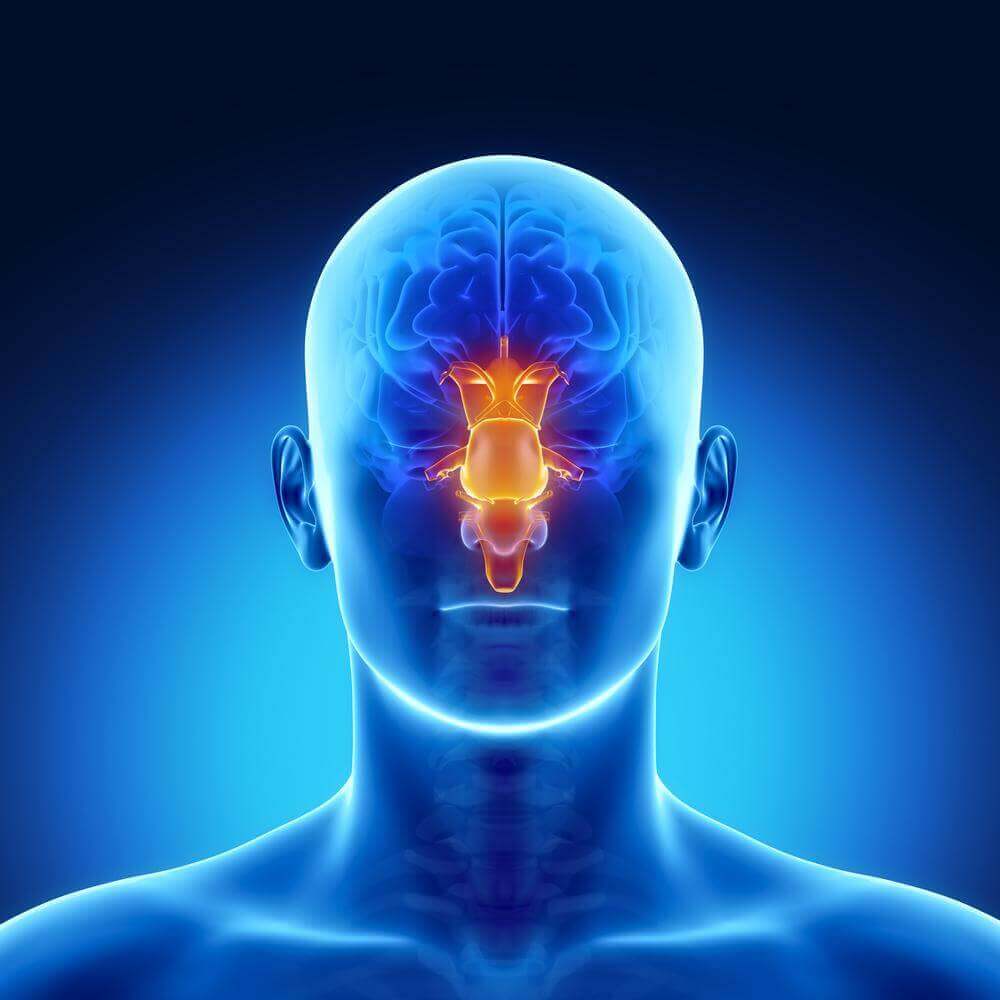Hypertrophic Rhinitis: Complete Guide to Treatment & Relief
Discover how hypertrophic rhinitis causes serious nasal obstruction through inflammation, affecting breathing quality and daily life, plus innovative solutions like the Back2Sleep intranasal orthosis for immediate relief.
Hypertrophic rhinitis is not just a simple blocked nose, it is a serious medical condition where inflammation of the nasal mucosa causes a noticeable nasal obstruction, often on one side but which can vary - unlike allergic or infectious rhinitis triggered by allergens or infections, hypertrophic rhinitis is characterized by persistent congestion that can greatly affect quality of life, with symptoms including difficulty breathing through the nose, frequent sneezing, and sometimes loss of smell, which is why innovative solutions like the Back2Sleep intranasal orthosis provide crucial relief by maintaining adequate nasal breathing.

Unlike allergic rhinitis or infectious rhinitis, which can be triggered by allergens or infections, hypertrophic rhinitis is characterised by persistent congestion that can greatly affect quality of life.
Symptoms include:
- 💊 difficulty breathing through the nose
- 💊 frequent sneezing
- 💊 sometimes a loss of smell
This condition can be exacerbated by factors such as:
- 💊 pollution
- 💊 excessive use of nasal sprays
Essential Information About Hypertrophic Rhinitis
| Key Points | Summary |
|---|---|
| Hypertrophic Rhinitis | A serious medical condition characterized by inflammation of the nasal mucous membranes causing significant obstruction. |
| Symptoms | Difficulty breathing, frequent sneezing, loss of smell, headaches, alteration of taste. |
| Causes | Pollution, excessive use of nasal sprays, physiological conditions such as pregnancy, respiratory pathologies such as asthma. |
| Treatment | Antihistamines, nasal corticosteroids, decongestants, surgical interventions, Back2Sleep intranasal orthotic. |
| Living with Hypertrophic Rhinitis | Maintain good nasal hygiene, manage allergens, regularly consult an ENT specialist, lifestyle adjustments. |
What Are the Symptoms of Hypertrophic Rhinitis?
Nasal Obstruction
The most obvious symptom of hypertrophic rhinitis is nasal obstruction, which can be:
- 💊 bilateral (affecting both nostrils)
- 💊 unilateral (affecting one nostril only)
This obstruction makes it difficult to breathe through the nose, often forcing people to breathe through the mouth, which can lead to other complications such as dry mouth.
Runny Nose and Rhinorrhoea
Nasal discharge, often accompanied by mucus, is common. The rhinorrhoea or nasal discharge, can be clear or purulent, depending on the underlying infection, and contributes to general discomfort.
Frequent Sneezing
Sneezing attacks are an irritative response of the nasal passages, exacerbated by inflammation of the nasal mucosa. These sneezes can occur with varying frequency and intensity, often unpredictably.
Itchy Nose and Eyes
Itching in the nose and around the eyes is common, especially if hypertrophic rhinitis is linked to an allergy. This itching may be accompanied by watering and redness of the eyes, increasing the feeling of discomfort.
Headaches and Migraines
Headaches and migraines can occur as a result of the constant pressure caused by nasal congestion. These pains are often localised around the sinuses and can worsen with changes in position or during the night.
Impaired Sense of Taste and Smell
Inflammation and obstruction of the nasal passages can lead to a reduction or loss of the sense of smell (anosmia), which also affects the sense of taste. This can reduce appetite and affect quality of life.
Complications such as Pharyngitis or Laryngitis
In the case of infectious rhinitis, complications such as pharyngitis or laryngitis can occur, often accompanied by fever and a feeling of general malaise.
Learn About Related ConditionsWhat Are the Causes of Hypertrophic Rhinitis?
Pollution & Irritants
Air pollution, particularly exhaust fumes and industrial fumes, can irritate the nasal mucosa and contribute to chronic inflammation. Tobacco smoke is a powerful irritant.
Nasal Spray Overuse
Prolonged use of nasal sprays containing vasoconstrictors can lead to rhinitis medicamentosa, known as rebound rhinitis.
Physiological Conditions
Certain conditions like pregnancy can predispose to hypertrophic rhinitis. Hormonal changes increase nasal mucosa inflammation.
Respiratory Pathologies
Conditions such as asthma and cystic fibrosis may predispose to hypertrophic rhinitis by influencing inflammatory state of nasal passages.

Understanding Environmental and Medical Triggers

Pollution and Environmental Irritants
Air pollution, particularly exhaust fumes and industrial fumes, can irritate the nasal mucosa and contribute to chronic inflammation of the nasal turbinates. Similarly, tobacco smoke is a powerful irritant that can exacerbate or trigger hypertrophic rhinitis.
Excessive Use of Decongestant Nasal Sprays
Prolonged use of nasal sprays containing vasoconstrictors can lead to rhinitis medicamentosa, aggravating inflammation of the nasal mucosa and contributing to hypertrophic rhinitis. This phenomenon is known as rebound rhinitis.
Particular Physiological Conditions
Certain physiological conditions, such as pregnancy, can predispose to hypertrophic rhinitis. During pregnancy, hormonal changes can increase the tendency for the nasal mucosa to become inflamed, leading to more frequent nasal obstruction.
Associated Respiratory Pathologies
Conditions such as:
- 💊 asthma
- 💊 cystic fibrosis
They may also predispose to hypertrophic rhinitis. These chronic respiratory pathologies can influence and aggravate the inflammatory state of the nasal passages.
What Are the Treatment Options for Hypertrophic Rhinitis?
Medical Treatment
Medical treatment is often the first line of defence against hypertrophic rhinitis. It may include: 💊 antihistamines to reduce allergic reactions, 💊 nasal corticoids to reduce inflammation of the nasal mucosa, 💊 decongestants to relieve nasal congestion.
Surgical Procedures
When drug treatment is not sufficient to control symptoms, surgery may be considered. These operations, such as radiofrequency or laser turbinoplasty, aim to reduce the size of the tissues of the nasal mucosa and improve breathing.
The Back2Sleep Intranasal Orthosis
An innovative option for the treatment of hypertrophic rhinitis is the intranasal orthosis by Back2Sleep. This brace, designed to maintain adequate nasal breathing during sleep, can help reduce symptoms of nasal congestion and improve sleep quality.
⚠️ It is important to consult a doctor for a precise diagnosis and a suitable treatment plan. These medicines can be taken orally or nasally, depending on the patient's symptoms and preferences.
Surgery is generally considered an option for severe cases or when structural abnormalities, such as a deviated septum, contribute to nasal obstruction.
Although less conventional, this solution can be particularly useful for people suffering from hypertrophic rhinitis associated with sleep disorders such as snoring or sleep apnoea.
Find Treatment Near YouHow Do You Live with Hypertrophic Rhinitis?
Adopting Good Nasal Hygiene
One of the first steps is to maintain good nasal hygiene. This includes regular washing of the nose with saline solution to help reduce inflammation of the mucous membranes and clear blocked nasal passages.
Managing Environmental Allergens
If your hypertrophic rhinitis is exacerbated by allergies, it is important to minimise exposure to common allergens such as dust, dust mites, pollen, and animal hair.
See an ENT Specialist Regularly
Regular follow-up with an ENT specialist is essential. The ENT can adjust treatments, prescribe anti-inflammatory drugs such as nasal corticoids, and recommend surgery if necessary.
Lifestyle Adaptations
This can include avoiding smoky or polluted environments, using a humidifier in the bedroom to maintain air humidity, and practising relaxation techniques to reduce stress.

Using saline nasal sprays can also help to moisten the nostrils and relieve dryness. Read also "Treating hypertrophic rhinitis".
This may involve changes to home maintenance, such as using air purifiers, washing sheets regularly in hot water, and avoiding carpets and curtains that trap dust.
Revolutionary Back2Sleep Solution for Hypertrophic Rhinitis
💡 The Back2Sleep intranasal orthosis provides a breakthrough solution for those suffering from hypertrophic rhinitis, especially when it affects sleep quality. This innovative device maintains open airways throughout the night without medication or surgery.
Immediate Relief - Reduces nasal congestion symptoms from the first night of use
Non-Invasive - Comfortable alternative to CPAP machines and surgical interventions
Sleep Quality - Improves breathing during sleep, reducing snoring and apnea episodes
FAQ on Hypertrophic Rhinitis
Hypertrophic rhinitis as such is not directly hereditary, but certain factors that contribute to its development may be. 🔎 For example, genetic predisposition to allergies or other inflammatory conditions can increase the risk of developing hypertrophic rhinitis. However, there is no direct evidence that hypertrophic rhinitis runs in families.
Preventing hypertrophic rhinitis can be complex, especially if it is linked to persistent genetic or environmental factors. However, certain measures can help reduce the risk or minimise symptoms:
- Avoid known irritants: if you are sensitive to pollution, tobacco smoke or other irritants, limiting your exposure can help prevent symptoms from worsening.
- Allergen control: for those with an allergic component, controlling allergens in the environment, such as dust mites, animal hair and moulds, can be beneficial.
- Maintaining good nasal hygiene: regular use of nasal washes with saline solutions can help keep nasal passages clear and reduce mucus build-up.
- Regular medical consultation: regular follow-up with an ENT specialist can help to manage symptoms and adjust treatment if necessary.
The Back2Sleep intranasal orthosis is particularly effective for people suffering from hypertrophic rhinitis associated with sleep disorders. It maintains adequate nasal breathing during sleep, reducing congestion symptoms and improving sleep quality without the discomfort of CPAP machines or surgical risks.
The most obvious symptoms include nasal obstruction (bilateral or unilateral), frequent sneezing, loss of smell, headaches, itchy nose and eyes, and potential complications like pharyngitis or laryngitis. These symptoms can greatly affect quality of life if left untreated.
Take Control of Your Hypertrophic Rhinitis Today
Don't let nasal obstruction control your life. Discover how Back2Sleep can provide immediate relief and improve your sleep quality.
Order Your Back2Sleep KitLearn more: Anti-Snoring Solutions | Latest Research | Contact Support | About Back2Sleep








